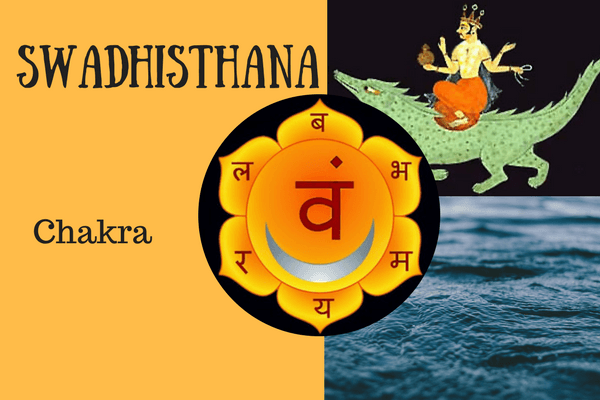
the second chakra: swadhisthana
The beauty of swadhisthaana chakra is immense. It is a very visual chakra, and those "visions" can be quite halucinogenic. The colours of everything in nature, around us, are intense when this chakra awakens, and there is a very good reason for this: we are moving towards the awakening of the pranic "body" sheath, the pranamaya kosha. We are starting to sense the energy all around, the energy growing within us, and the energy of others'.
We are not quite at the awakening of the pranamaya kosha, but it is dawning.
breathing techniques are important for swadhisthana
We have to do something for this awakening to take place, and the main things to do are:
- keeping physically busy so that we can sleep well and keep our growing energy moving
- doing pranayama (breathing techniques) which are specific to kundalini experience
The 2 main pranayamas are bhastrika (bellows breath) and
nadi shodan (alternate nostril breath):
- bhastrika fires up our energetic system
- nadi shodan balances two of the main energy systems in our being: the energy flows known as ida and pingala. Ida relates to, but is not, the parasympathetic nervous system. It is a quiet mental energy. Pingala is a more dynamic, energy and relates to the sympathetic nervous system. Ida is more like consciousness whilst pingala is more like matter, and in kundalini yoga, these two need to be separated, and flow harmoniously, side by side. They flow up each side of the spine from mooladhara chakra, ida starts flowing to the left, pingala to the right. They then weave together across the spine at swadhisthaana chakra, separate to swop sides, and go up to the next chakra. This continues until they get to ajna chakra, inside the head.
energy flows are important in spiritual awakening
Why are they so important? When they build up in potency, and flow harmoniously together, yet apart, a third energy, the spiritual energy, the mighty kundalini can be stimulated quite effortlessly. It is a natural occurrence, and it resides in the most important flow channel (nadi), called sushumna.
Sushumna relates to, but is not, the central nervous system in the centre of the spine and in the brain. The central nervous system is also part of the brain and the chakras are not only in the front and back of the body, but also in sushumna and the brain/mind complex.
energy locks are important too
Where the ida and pingala nadis intersect in the spine, where the chakras are, these can be stimulated with bandhas, or energy locks. There are three main bandhas. They are quite different from the bandhas of vinyasa and ashtanga yoga.
There are:
- a root lock, or contraction, of mooladhara chakra
- an abdominal lift at manipura chakra
- a throat seal at vishuddhi, the throat chakra
These can be done:
- separately
- all together on holding the breath out (maha bandha)
- root lock and throat lock together on an inhaled retention
As you can imagine, they greatly stimulate the chakras. When breath retention is done with the bandhas, they release an lot of energy.
At Swadhisthaana chakra, a lot of energy needs to be built up, and I shall explain why in the next post.
Comments
Post a Comment
You can leave comments here - comments are moderated for the time being.